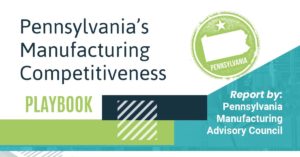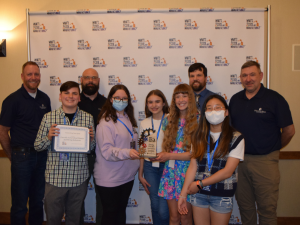
Metal Integrity, a sheet metal fabricator and machine shop in State College PA, was having continued workforce issues, leading to challenges to meet customer orders. Through a national Advanced Manufacturing Technology Solutions grant, IMC helped the company implement advanced robotics & automation technology. They quickly realized production improvements with the first job run on the automated system of 200-250%, seeing an increase in production from 180 parts per week to 475 parts per week.
After attending an AMTS sales training program in Fall 2022, knowing of Metal Integrity’s interest in automation, IMC’s Dana Gordon reached out to Metal Integrity directly to discuss. The sheet metal fabricator and machine shop was having continued workforce issues, leading to challenges to meet customer orders.
Support provided; tools utilized
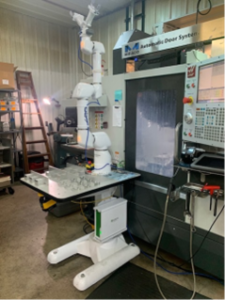 Upon meeting with Metal Integrity, IMC helped them refine their automation strategy, which consisted not only of robotic machine tending, but also an investment in a new lathe with a bar feeder along with sheet metal quoting automation software. As the client was already progressing down the path toward machine tending, there was no need to complete a full assessment; IMC and the AMTS lead for Pennsylvania instead met with client to validate their robotic machine tending approach.
Upon meeting with Metal Integrity, IMC helped them refine their automation strategy, which consisted not only of robotic machine tending, but also an investment in a new lathe with a bar feeder along with sheet metal quoting automation software. As the client was already progressing down the path toward machine tending, there was no need to complete a full assessment; IMC and the AMTS lead for Pennsylvania instead met with client to validate their robotic machine tending approach.
Lessons Learned
Overall, the project was a success, however the timeline was longer than anticipated. The project hit various challenges during the implementation phase, leading to a longer than desired learning curve. These challenges were primarily related to the inexperience of both the integrator and the robot manufacturer.
The first challenge dealt with the performance of the Productive Robotics OB7 robot once a dual gripper was added. The robot motion became very erratic and was unable to perform the programmed tasks. It was later discovered that the robot programming interface was inadequate for making the needed adjustments for the higher weight of the end effector and the extended tool center point (TCP). It took weeks of troubleshooting by both the integrator, Exact Machine Tool, and the manufacturer, Productive Robotics to make this discovery, further delaying production implementation.
The next major challenge involved the workholding setup. As is common in mill machine tending systems, Exact Machine Tool installed a Airvise AV-T-4 pneumatic vice that was integrated into the robot controller. However, the pneumatic vice was unable to hold the tight tolerances required of the target part. In the end, Metal Integrity found a solution that allowed them to automate their standard Kurt workholding system that already held needed tolerances with a Rapid Design Solutions CNC vise actuator.
An ROI of 4 months was expected prior to launching the project and that will be exceeded, depending on upcoming parts volumes. Metal Integrity has already realized production improvements on the first job run on the automated system of 200-250%, seeing an increase in production rate from 180 parts/week to 475 parts per week. For this part, based on reallocated labor alone, they will see an ROI of 6 months. When the increase in production for parts run off-shift with a conservative value applied to machine runtime is considered, it surpasses a 3-month ROI.
In hindsight, going with an experienced system integrator may have reduced the implementation difficulties experienced in working with an equipment distributor. However, the low price point of the system and the fact that they are now in operation, makes it challenging to determine if that would have been advantageous. Even considering the delays and additional time required of Metal Integrity personnel, the ROI is in an acceptable range.
This project made possible through MEP AMTS grant funds.
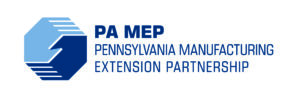
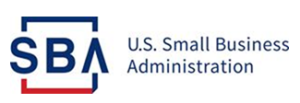



 IMC, along with partners across Pennsylvania and the United States, is excited to celebrate Manufacturing Week on October 7-14, 2022.
IMC, along with partners across Pennsylvania and the United States, is excited to celebrate Manufacturing Week on October 7-14, 2022. IMC recently hosted a webinar where our energy partner, APPI Energy, shared what the volatile energy markets will mean with historic increases in the cost of energy for manufacturers in PA for the coming year and beyond. Dan Forgacs, VP of Market Intelligence & Analytics for APPI, presented both historical data and projected commercial energy costs as well as potential ways to combat its effects on the bottom line. Included were the projected or confirmed commercial energy increases by utility companies in PA:
IMC recently hosted a webinar where our energy partner, APPI Energy, shared what the volatile energy markets will mean with historic increases in the cost of energy for manufacturers in PA for the coming year and beyond. Dan Forgacs, VP of Market Intelligence & Analytics for APPI, presented both historical data and projected commercial energy costs as well as potential ways to combat its effects on the bottom line. Included were the projected or confirmed commercial energy increases by utility companies in PA: